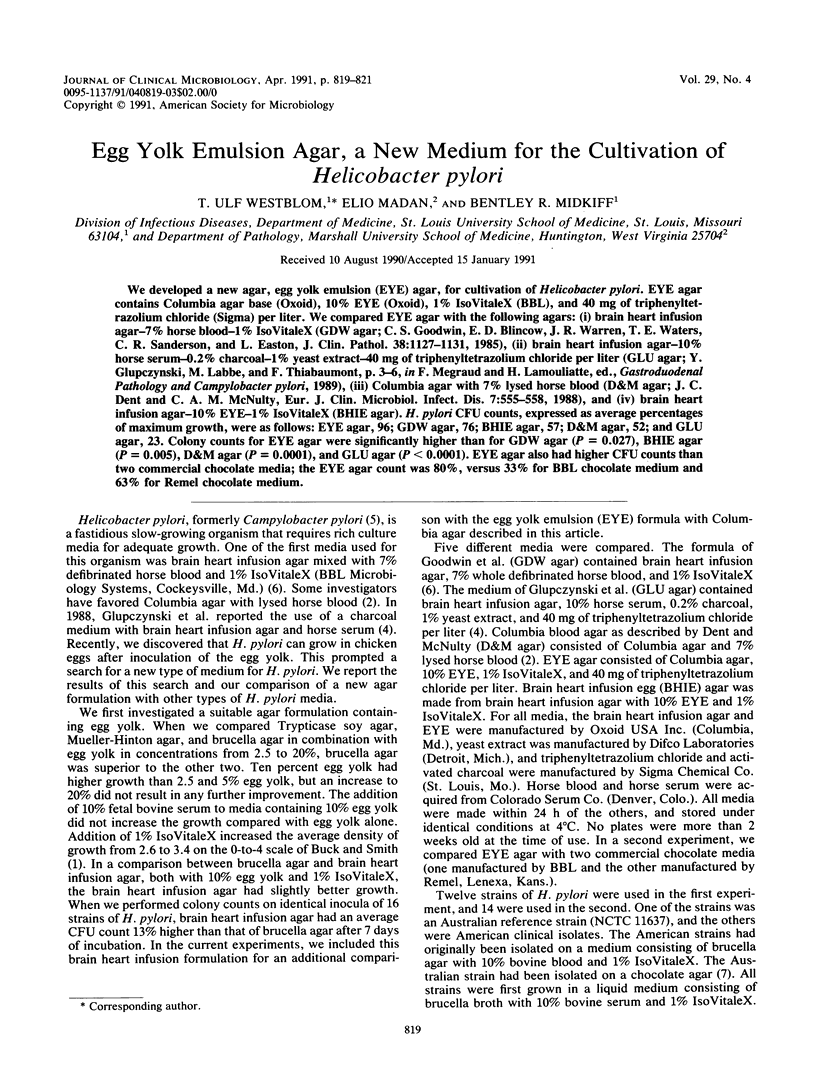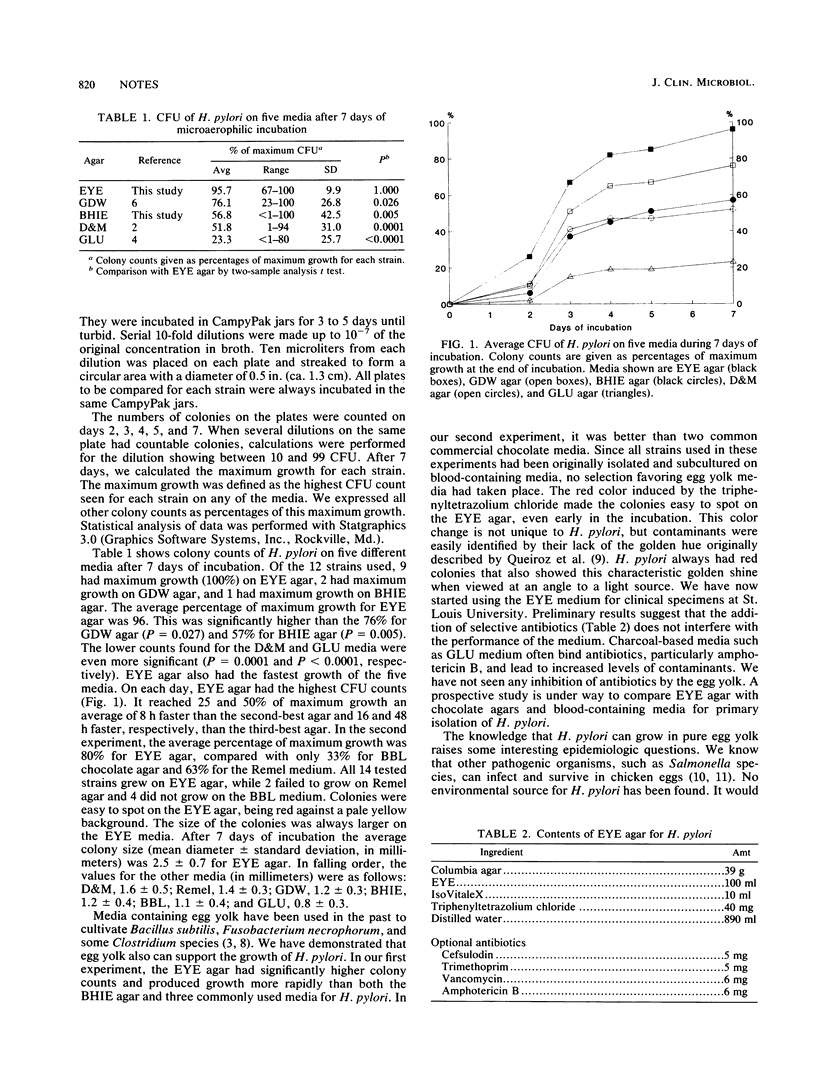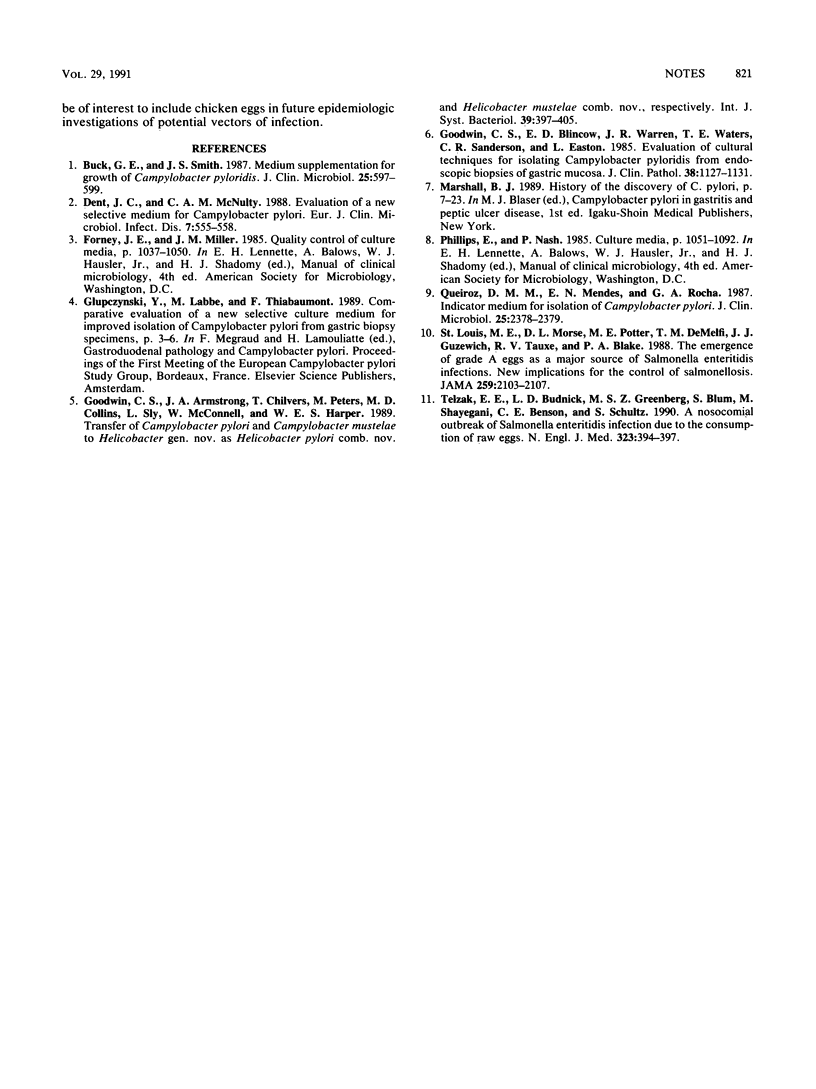Abstract
We developed a new agar, egg yolk emulsion (EYE) agar, for cultivation of Helicobacter pylori. EYE agar contains Columbia agar base (Oxoid), 10% EYE (Oxoid), 1% IsoVitaleX (BBL), and 40 mg of Triphenyleteraxolium chloride (Sigma) per liter. We compared EYE agar with the following agars: (i) brain heart infusion agar-7% horse blood-1% IsoVitaleX (GDW agar; C. S. Goodwin, E. D. Blincow, J. R. Warren, T. E. Waters, C. R. Sanderson, and L. Easton, J. Clin. Pathol. 38:1127-1131, 1985), (ii) brain heart infusion agar-10% horse serum-0.2% charcoal-1% yeast extract-40 mg of triphenyltetrazolium chloride per liter (GLU agar; Y. Glupczynski, M. Labbe, and F. Thiabaumont, p. 3-6, in F. Megraud and H. Lamouliatte, ed., Gastroduodenal Pathology and Campylobacter pylori, 1989), (iii) Columbia agar with 7% lysed horse blood (D&M agar; J. C. Dent and C. A. M. McNulty, Eur. J. Clin. Microbiol. Infect. Dis. 7:555-558, 1988), and (iv) brain heart infusion agar-10% EYE-1% IsoVitaleX (BHIE agar). H. pylori CFU counts, expressed as average percentages of maximum growth, were as follows: EYE agar, 96; GDW agar. 76; BHIE agar, 57; D&M agar, 52; and GLU agar, 23. Colony counts for EYE agar were significantly higher than for GDW agar (P = 0.027), BHIE agar (P = 0.005), D&M agar (P = 0.0001), and GLU agar (P less than 0.0001). EYE agar also had higher CFU counts than two commercial chocolate media; the EYE agar count was 80%, versus 33% for BBL chocolate medium and 63% for Remel chocolate medium.
Full text
PDF


Selected References
These references are in PubMed. This may not be the complete list of references from this article.
- Buck G. E., Smith J. S. Medium supplementation for growth of Campylobacter pyloridis. J Clin Microbiol. 1987 Apr;25(4):597–599. doi: 10.1128/jcm.25.4.597-599.1987. [DOI] [PMC free article] [PubMed] [Google Scholar]
- Dent J. C., McNulty C. A. Evaluation of a new selective medium for Campylobacter pylori. Eur J Clin Microbiol Infect Dis. 1988 Aug;7(4):555–558. doi: 10.1007/BF01962615. [DOI] [PubMed] [Google Scholar]
- Goodwin C. S., Blincow E. D., Warren J. R., Waters T. E., Sanderson C. R., Easton L. Evaluation of cultural techniques for isolating Campylobacter pyloridis from endoscopic biopsies of gastric mucosa. J Clin Pathol. 1985 Oct;38(10):1127–1131. doi: 10.1136/jcp.38.10.1127. [DOI] [PMC free article] [PubMed] [Google Scholar]
- Queiroz D. M., Mendes E. N., Rocha G. A. Indicator medium for isolation of Campylobacter pylori. J Clin Microbiol. 1987 Dec;25(12):2378–2379. doi: 10.1128/jcm.25.12.2378-2379.1987. [DOI] [PMC free article] [PubMed] [Google Scholar]
- St Louis M. E., Morse D. L., Potter M. E., DeMelfi T. M., Guzewich J. J., Tauxe R. V., Blake P. A. The emergence of grade A eggs as a major source of Salmonella enteritidis infections. New implications for the control of salmonellosis. JAMA. 1988 Apr 8;259(14):2103–2107. [PubMed] [Google Scholar]
- Telzak E. E., Budnick L. D., Greenberg M. S., Blum S., Shayegani M., Benson C. E., Schultz S. A nosocomial outbreak of Salmonella enteritidis infection due to the consumption of raw eggs. N Engl J Med. 1990 Aug 9;323(6):394–397. doi: 10.1056/NEJM199008093230607. [DOI] [PubMed] [Google Scholar]


